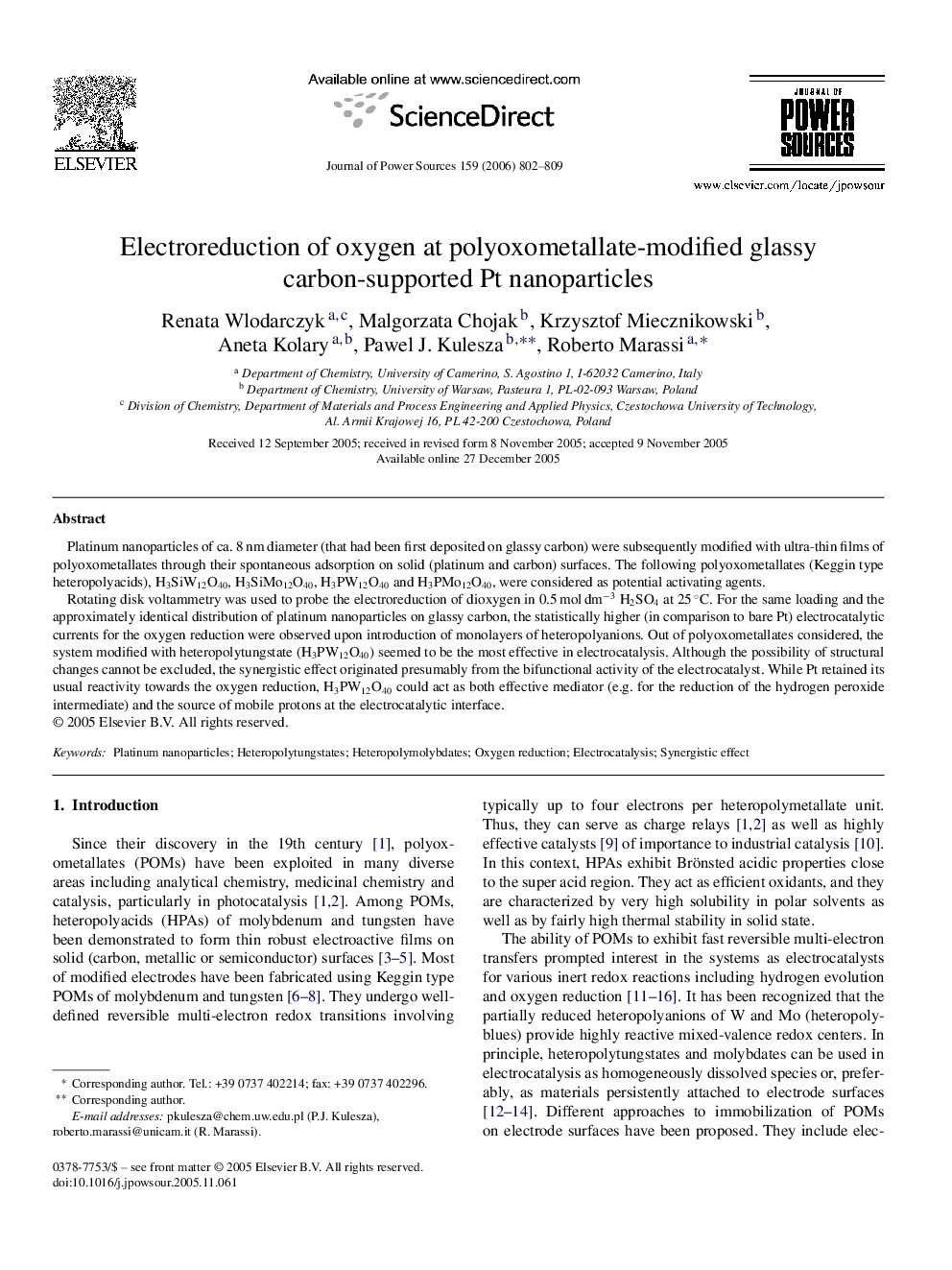| Article ID | Journal | Published Year | Pages | File Type |
|---|---|---|---|---|
| 1287228 | Journal of Power Sources | 2006 | 8 Pages |
Platinum nanoparticles of ca. 8 nm diameter (that had been first deposited on glassy carbon) were subsequently modified with ultra-thin films of polyoxometallates through their spontaneous adsorption on solid (platinum and carbon) surfaces. The following polyoxometallates (Keggin type heteropolyacids), H3SiW12O40, H3SiMo12O40, H3PW12O40 and H3PMo12O40, were considered as potential activating agents.Rotating disk voltammetry was used to probe the electroreduction of dioxygen in 0.5 mol dm−3 H2SO4 at 25 °C. For the same loading and the approximately identical distribution of platinum nanoparticles on glassy carbon, the statistically higher (in comparison to bare Pt) electrocatalytic currents for the oxygen reduction were observed upon introduction of monolayers of heteropolyanions. Out of polyoxometallates considered, the system modified with heteropolytungstate (H3PW12O40) seemed to be the most effective in electrocatalysis. Although the possibility of structural changes cannot be excluded, the synergistic effect originated presumably from the bifunctional activity of the electrocatalyst. While Pt retained its usual reactivity towards the oxygen reduction, H3PW12O40 could act as both effective mediator (e.g. for the reduction of the hydrogen peroxide intermediate) and the source of mobile protons at the electrocatalytic interface.
